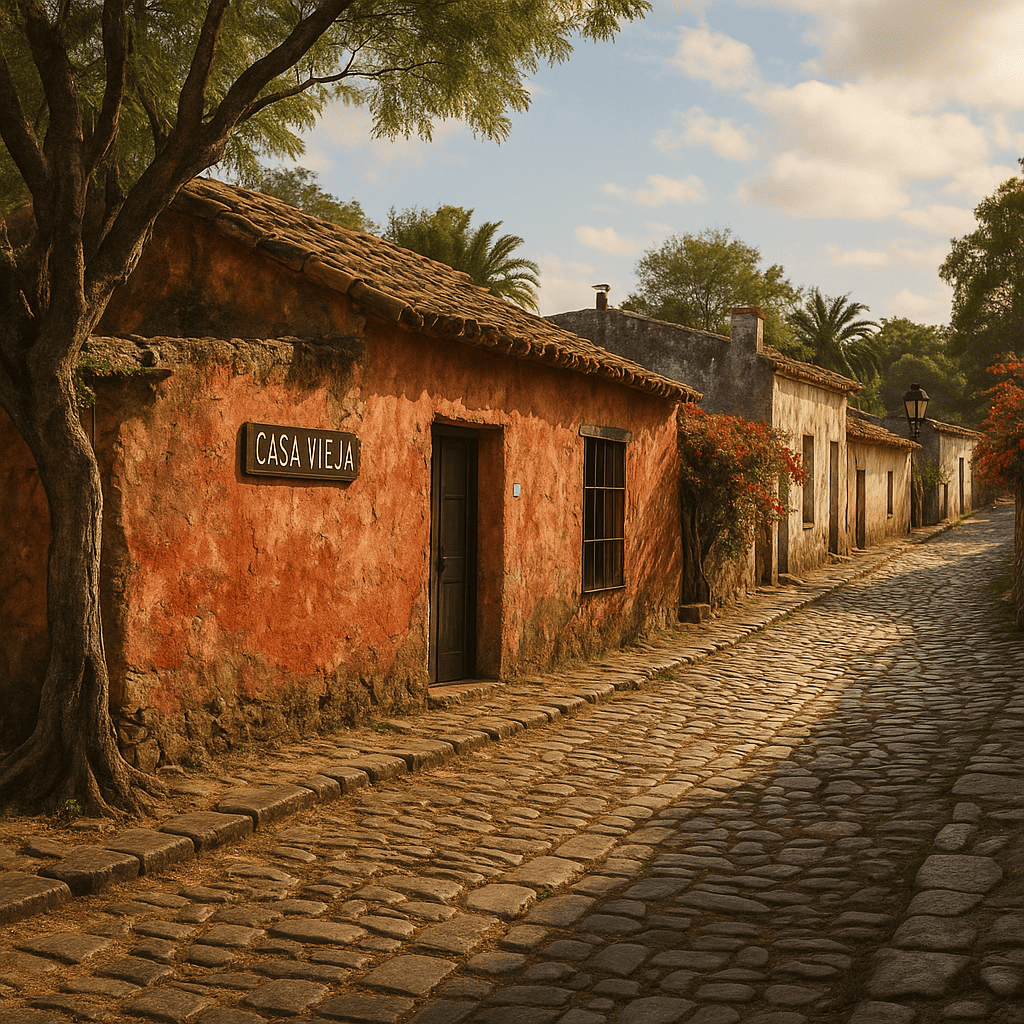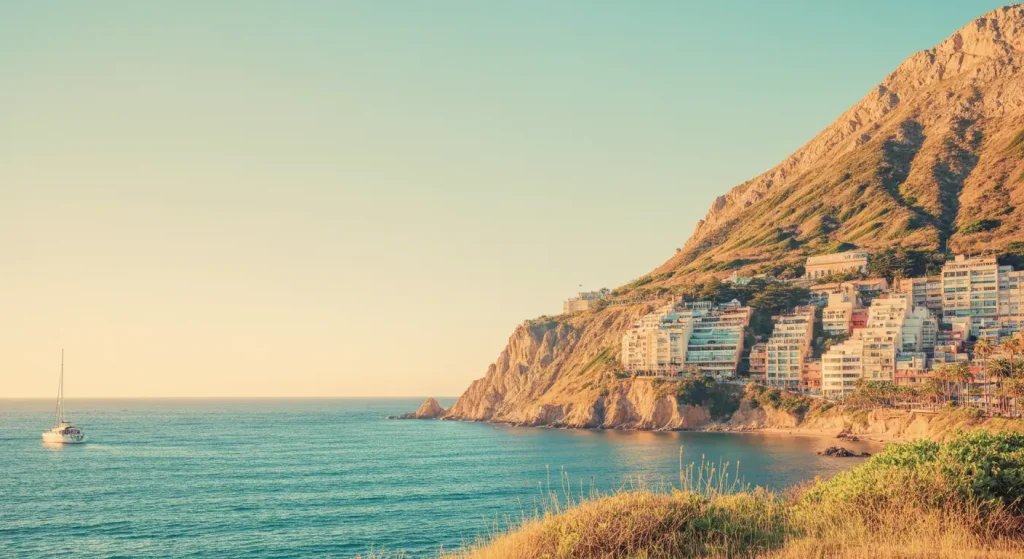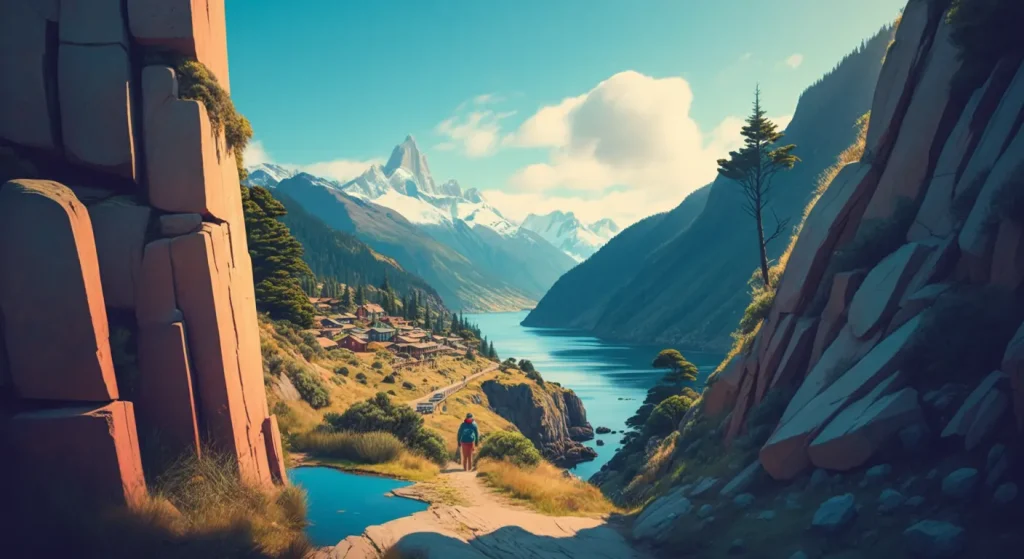
Mention Uruguay, and most travelers instantly imagine beach resorts, vibrant Montevideo streets, or picturesque Colonia del Sacramento. But there’s far more hidden beneath the charm of this compact South American country. Scattered along Uruguay’s less-traveled backroads lie quaint villages that time seems to have forgotten, each offering a glimpse of authentic local life away from tourist trails. Whether it’s abandoned colonial-era buildings, quiet cobblestone streets, or fascinating historical tales awaiting discovery, exploring these forgotten villages reveals a unique, unspoiled side of Uruguay few visitors ever truly see. So fuel up your car, download that offline map, and get ready to step back in time—and dive deep into the Uruguay most travelers miss.
1. Eden: The Railway Village Lost in Time
Your first stop should be Eden, a tiny village tucked away in Tacuarembó department. Originally built around a bustling railway station, Eden was nearly deserted when train service stopped—but travelers can still imagine its thriving past through its perfectly preserved station and dozens of abandoned houses frozen in time. Don’t miss taking pictures of vintage Uruguayan railway artifacts and strolling through empty streets that tell stories of bygone eras. Fill up your gas tank in nearby Tacuarembó city, as services are limited along rural routes around Eden, and always carry snacks and water for comfortable exploration.
2. Pueblo Garzón: Hidden Culinary Capital
This rustic, charming village in Maldonado region boasts fewer than 200 residents—but don’t let the small size fool you. Pueblo Garzón became a surprising gourmet spot when renowned Argentine chef Francis Mallmann opened his restaurant here. Travelers can savor hearty local dishes or take cooking workshops with regional ingredients in his cozy eatery tucked along Garzón’s tranquil streets. Pro tip: Pair the meal with a tasting experience at local vineyards or artisanal olive oil producers within short driving distance—a delicious combination of history, culture, and culinary pleasure.
3. Conchillas: The English Village of Uruguay
Uruguay’s European colonial roots go beyond Spanish and Portuguese. Conchillas, in Colonia department, provides a rare glimpse into the nation’s British heritage. Established by an English quarrying company in the 19th century, you’ll still find distinctive yellow-stone cottages, an elegant hotel once frequented by businessmen, and a charming Anglican church standing proud. Plan your visit around lunchtime and pop into one of the cozy cafés that serve traditional Uruguayan dishes paired deliciously with English-style tea—a quirky blending you won’t experience anywhere else in Uruguay.
4. Villa Soriano: Uruguay’s Oldest Yet Forgotten Town
Founded in 1624, Villa Soriano is Uruguay’s oldest colonial settlement, yet it remains curiously under-the-radar. Wander streets lined by colonial-era homes and centuries-old trees shading whitewashed buildings while hearing the slow rush of river waters nearby. Check out the Chapel of Santo Domingo de Soriano, standing since 1751 and brimming with colonial warmth. Be sure to chat with locals lingering on the central plaza benches—the kind you’ll immediately trust to recommend hidden scenic spots along the Río Negro riverbank or tell fascinating tales of pirate encounters centuries ago.
5. Aiguá: Beauty Between the Hills
Just inland from the beaches of Rocha and Maldonado lies Aiguá, peacefully situated amid rolling green hills, waterfalls, and tranquil streams. While tiny on a map, it serves as a magnificent home-base for nature lovers. Rent a bike to explore Cerro Catedral—the highest point in Uruguay—and marvel at panoramic vistas over rugged hillsides. Don’t forget to pack some sturdy footwear: hiking trails range from easy to moderate, offering travelers stunning nearby cascades and remote rural hamlets for photography or picnicking away from crowds.
6. Ingeniero Andreoni: A Piece of Italy in the Countryside
Ingeniero Andreoni, near Rocha, evokes surprising Italian charm deep within Uruguay’s countryside. The community formed when Italian settlers arrived, bringing not only their language but delicious culinary traditions. Visit small eateries where homemade pasta dishes rival those you’d taste in Rome. Many local homes proudly display old photographs and family heirlooms from the original immigrants, creating an intimate cultural experience. Plan to arrive hungry, leave plenty of room for dessert, and practice your Italian—locals will eagerly share stories and recommendations.
7. Curtina: The Hidden Artistic Sanctuary
Curtina village, remote yet mesmerizing, attracts curious travelers thanks to its delightful murals covering homes, businesses, and fences. Initiated by local artists, vivid street art depicts regional legends, traditions, and flora and fauna. Bring your camera—you’ll see rural homes transformed into colorful gallery walls worthy of social media envy. Slightly north of Tacuarembó city, Curtina doesn’t offer many dining or lodging options, so consider it a rewarding day trip while based nearby, and grab a hearty chivito sandwich before venturing out.
8. 25 de Agosto: Open-Air Museum Village
Art buffs shouldn’t miss 25 de Agosto village in Florida department, a small but vibrant state-supported open-air art museum. With nearly one hundred murals painted on houses and walls, it encapsulates a bold artistic experiment generating astounding creativity in a quiet rural backdrop. Spend a leisurely afternoon photographing innovative works of modern Uruguayan art while chatting casually with friendly villagers who love sharing stories of local artists and public-art workshops. Reachable by bus or private vehicle, it’s best visited in pleasant weather, enhancing your casual stroll through colorful streets.
9. San Gregorio de Polanco: The Painted Lakeside Town
Separated from mainstream tourist trails by distances and rural roads, San Gregorio de Polanco nestles along the shores of beautiful Lago Rincón del Bonete. Its visually striking atmosphere sets it apart—more than 70 murals decorate walls, turning the town into a delightful canvas alongside sandy beaches and soothing lake views. Rent a kayak or canoe in town and combine art exploration with tranquil paddling excursions. Local restaurants specialize in fresh river fish, making your lakeside meal unforgettable. A tip for overnight guests: cozy lakeside inns fill quickly in summer months, so reserve in advance.
Exploring Uruguay through these forgotten villages requires advance planning. Always prepare offline maps and mobile chargers, carry sufficient snacks and water, and ensure basic Spanish phrases at hand. Rural fuel stations are scattered sparingly across roads, making it wise to never let your tank run low. But these minor logistical challenges fade when you’re rewarded by glimpses of Uruguay’s heart, culture, and lesser-known treasures.
Taking Uruguay’s forgotten backroads brings delights far from tourist crowds, immersing you deeply into warmhearted local communities and remarkable hidden gems. Each village provides unique treasures and lasting memories you can’t create anywhere else. Pack your bag, keep your camera ready, and say “buen viaje”—rewarding adventures await on Uruguay’s road less traveled!


